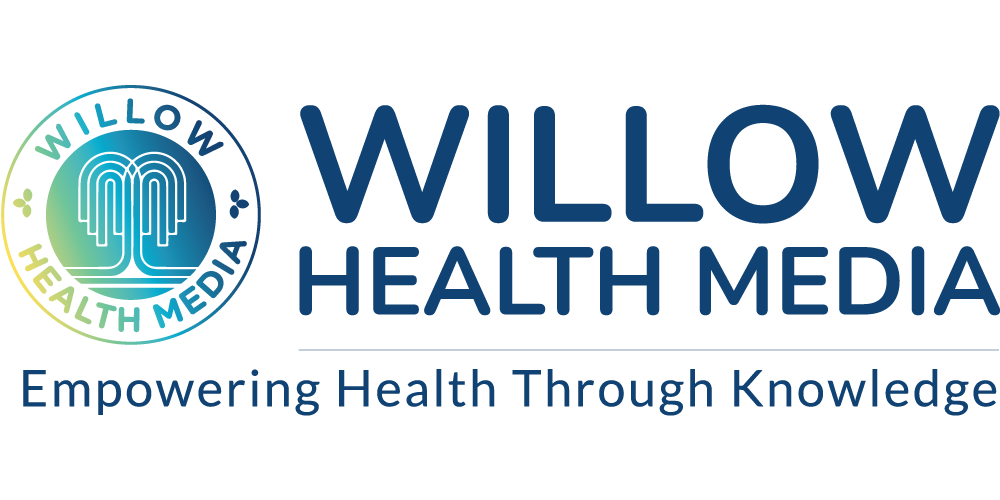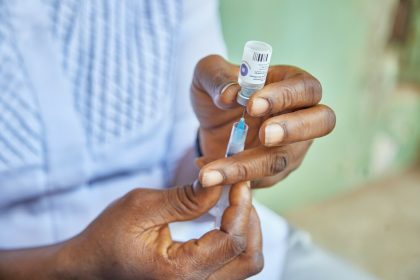WHO estimated that AMR directly caused 1.27 million global deaths in 2019 and contributed to 4.95 million deaths indirectly.
Health experts are warning that antimicrobial resistance (AMR) is fast becoming one of the world’s most urgent health crises, with rising cases from war-torn Gaza to hospitals in Kenya underscoring how fragile health systems and human behaviour are accelerating a silent global epidemic.
On September 10, 2025, global health stakeholders sounded the alarm over Gaza’s escalating AMR rates, describing the situation as a “healthcare emergency” that demands immediate international action.
According to the World Health Organization (WHO), AMR directly caused 1.27 million deaths worldwide in 2019 and contributed to nearly 4.95 million more. Experts fear those numbers have grown substantially since, driven by conflict, overuse of antibiotics, and collapsing public health infrastructure.
In Gaza, where Israel’s military offensive since October 7, 2023, has devastated health facilities, AMR has surged amid overcrowded hospitals, limited diagnostics, and dwindling antibiotic supplies.
A new study published in The Lancet, “Multidrug-resistant bacteria amid health-system collapse in Gaza,” revealed a sharp rise in drug-resistant infections linked to the collapse of medical infrastructure and widespread power cuts.
Researchers examined data from Al-Ahli Arab Hospital, Gaza’s only operational microbiology lab, which relied on batteries and inverters to continue functioning. Between November 1, 2023, and August 31, 2024, the hospital collected 1,317 clinical specimens, most from wound swabs and urine samples, and tested them against 24 antimicrobial agents.
The results were alarming: 66.9 per cent of the 982 bacterial isolates tested were found to be multidrug resistant (MDR), defined as non-susceptibility to at least three drugs in three or more classes. The prevalence of MDR infections rose from 66.7 per cent in late 2023 to 68.2 per cent in mid-2024, signalling an upward trend.
“Healthcare workers and governments worldwide must advocate for the cessation of the Israeli military invasion that has resulted in a surge of trauma injuries and the widespread deliberate targeting of hospitals, laboratories, and water desalination plants; without this ceasefire, the infection burden will escalate further,” the study authors and panellists agreed during a forum reviewing the findings.
Panel participants included Dr Bilal Irfan of Harvard Medical School, Prof Abdelraouf El Manama of the Islamic University of Gaza, and Dr Mousa Hendia, a member of Gaza’s National AMR Committee.
Gaza’s AMR problem could have far-reaching consequences beyond its borders, as resistant pathogens spread through travel and humanitarian corridors
Dr Hendia urged that “laboratories still in existence must be stabilised with supplies” and called for the lifting of restrictions on the entry of essential medical equipment and drugs.
The study also reported a rise in Methicillin-Resistant Staphylococcus Aureus (MRSA) infections, linked to overcrowded wards, a lack of sterile irrigation fluids, and frequent power outages that crippled surgical theatres.
Experts warn that Gaza’s AMR problem could have far-reaching consequences beyond its borders, as resistant pathogens spread through travel and humanitarian corridors.
Thousands of kilometres away, Kenya is grappling with its own AMR crisis, one rooted less in war than in human behaviour and systemic weaknesses.
Data from the Global Burden of Disease study indicates that AMR directly contributed to 8,500 deaths and was associated with 37,300 deaths in Kenya in 2019. The numbers are likely higher today, according to researchers and public health agencies.
A 2024 analysis published in the National Medicine Library, “Fragmented Picture of Antimicrobial Resistance in Kenya: A Situational Analysis of Antimicrobial Consumption and the Imperative for Antimicrobial Stewardship,” highlighted overuse and misuse of antibiotics as key drivers of resistance.
“AMR occurs naturally over time as microbes adapt and develop genetic changes,” the study noted, warning that irrational use of antibiotics in humans and animals is accelerating the process. For ordinary Kenyans, the impact is becoming personal.
“I’ve always used Amoxil for flu and respiratory infections because it was cheap and worked,” said Antynet Ford, a resident of Nairobi. “Now it doesn’t help me anymore. I have to get stronger antibiotics, which are expensive.”
Ford said she now pays over Ksh2,000 for a single dose of newer antibiotics, a significant expense for most Kenyans. “All the affordable options are generic, and I’m not sure they work as well,” she added.
Health experts point to profit-driven prescribing and weak oversight in private hospitals as major culprits in Kenya
While self-medication has often been blamed for antibiotic misuse, a 2018 cross-sectional pilot study, “Dispensing of Antimicrobials in Kenya,” found that 94.1 per cent of antibiotics in Kenya were dispensed with a valid prescription.
Instead, health experts point to profit-driven prescribing and weak oversight in private hospitals as major culprits.
“With profit targets, some private and mission hospitals prescribe high-line antibiotics even for conditions that aren’t resistant to basic drugs like Amoxil,” said Maureen Madegwa, an administrator at a mission hospital in Eldoret. “It’s a dangerous cycle. When resistance builds, patients pay more or risk severe complications.”
The International Centre for Antimicrobial Resistance Solutions (ICARS) estimates that 40 per cent of prescriptions in Kenya are inappropriate or suboptimal, citing poor diagnostic capacity, mistrust of lab results, and weak infection prevention systems.
This often pushes surgeons to administer broad-spectrum antibiotics preemptively to avoid surgical site infections. But that practice, experts warn, fuels AMR and makes medical procedures, including Caesarean sections and chemotherapy, riskier and costlier.
Early findings from Kenya’s new Healthcare-Associated Infections (HAI) Surveillance System have already raised red flags. Monitoring surgical site infections in select county hospitals revealed “poor compliance with surgical prophylaxis,” particularly after C-sections, leading to extended hospital stays and antibiotic use.
Studies in Nairobi and Kiambu show that 90 per cent of veterinary antibiotics are used in poultry, with tetracycline and tylosin being the most common
A 2024 study under the Kenya Medical Research Institute (KEMRI) and the Child Health and Mortality Prevention Surveillance (CHAMPS) program found a surge in AMR bacteria among children under five who died between 2021 and 2023 in Siaya and Kisumu counties.
The study identified Escherichia coli and Klebsiella pneumoniae as common killers, resistant to first-line antibiotics such as ampicillin, sulfamethoxazole-trimethoprim, and ceftriaxone.
“If left unchecked, drug resistance will continue to limit treatment options and contribute significantly to preventable child mortality,” CHAMPS researchers warned during their 2025 presentation.
Meanwhile, multidrug-resistant tuberculosis (MDR-TB) remains one of the gravest AMR threats globally. MDR-TB does not respond to first-line drugs Isoniazid and Rifampicin, requiring expensive second-line treatments that carry serious side effects.
Health officials warn that recent funding cuts to Kenya’s TB programs by USAID could lead to drug shortages, treatment defaults, and a spike in MDR-TB cases, a potential health and economic disaster.
The WHO has also flagged antimicrobial use in animals as a growing driver of resistance. Kenya lacks a national antimicrobial use monitoring system, but studies in Nairobi and Kiambu show that 90 per cent of veterinary antibiotics are used in poultry, with tetracycline and tylosin being the most common.
As livestock production shifts from small-scale to intensive farming, experts warn that misuse of veterinary antibiotics could accelerate the transmission of resistant bacteria from animals to humans through food and the environment.
Beyond health, AMR poses a growing economic threat. The WHO projects that unchecked resistance could reduce global GDP by more than 1 per cent by 2050, pushing millions into poverty and straining already burdened health systems.
To combat the crisis, Kenya has rolled out its National Action Plan (NAP) on AMR 2023–2027, emphasising awareness, training, and policy enforcement.
The plan promotes Antimicrobial Stewardship (AMS) programs that ensure the right drug is used for the right infection at the right time. The Kenyatta National Hospital has developed its own Empiric Antibiotic Guidelines to guide prescribers on appropriate antibiotic use. However, most AMS initiatives remain “fragmented and confined to a few institutions,” according to health ministry officials.
Experts agree that the battle against AMR requires a One Health approach integrating human, animal, and environmental health to prevent the spread of resistant microbes.
As Gaza’s hospitals battle superbugs under siege and Kenya’s clinics struggle with overprescription, the message from scientists and doctors is the same: antimicrobial resistance is not a future threat, it’s a global emergency unfolding now.

























